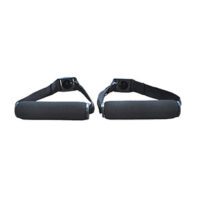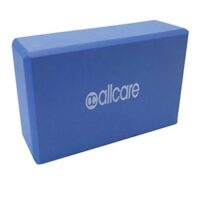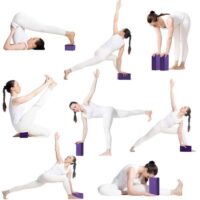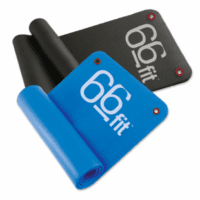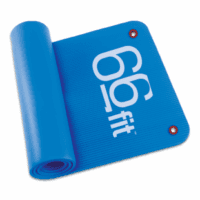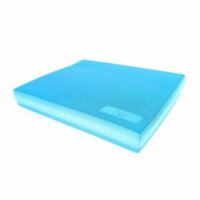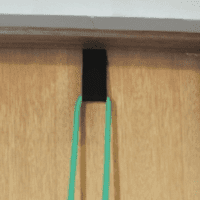Delayed Onset Muscle Soreness (DOMS)
Article by John Miller

What is DOMS?
Delayed Onset Muscle Soreness
Delayed-Onset Muscle Soreness (DOMS) is exercise-related muscle pain. It develops after excessive and unaccustomed exercise. It is particularly prevalent if that exercise has an eccentric component.
Eccentric exercise is an exercise where the muscles are contracting while lengthening – e.g. downhill running, long-distance running, plyometric exercises, and landing drills.
What Causes DOMS?
Delayed onset muscle soreness is myofibril tears (muscle strains). The microtrauma results in an inflammatory response with intramuscular fluid and electrolyte shifts.
We do know that biochemical markers (such as creatine kinase and lactic dehydrogenase) are in the blood of sufferers, which is consistent with muscle fibre disruption.
Swelling, altered muscle firing patterns and pain are the reasons why muscle strength, motions and function is impaired in sufferers.
(Black et al. 2008, Cleak et al. 1992, MacIntyre et al. 2001, Cheung et al. 2003, Dutto and Braun 2004, Paschalis 2007).
What are the Symptoms?
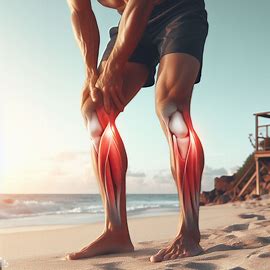
The classic DOMS sufferer describes a dull muscle ache that develops 24 to 48 hours after the performance of a new or strenuous exercise. It is localised to the involved muscles and will result in muscle stiffness plus tenderness. Passive stretching will increase your symptoms which is one of the reasons why you feel stiff.
DOMS can also result in a short-term loss of muscle strength, a reduced joint range of motion, and possibly swelling of the affected muscle groups. The good news is that once you start moving your sore muscles, they will begin to feel less painful. But, you will find walking downstairs troublesome if it’s your quadriceps that are suffering!
How is it Diagnosed?
DOMS is a clinical diagnosis. Your physiotherapist is an expert in the diagnosis of DOMS and excluding other more significant injuries such as muscle tears, strains or ruptures. An ultrasound scan is unreliable in the diagnosis of DOMS but may assist determine a more substantial muscle tear.
What is DOMS Treatment?
DOMS should be treated initially with active rest and anti-inflammatory measures such as ice. (Bleakley et al. 2012). Research on heat therapy for back muscle DOMS with a definite pain reduction. (Mayer et al. 2006)
NSAIDs may provide for pain relief, but long-term use may impair satellite cell healing in DOMS. (Schoenfeld 2012).
Gentle massage and pressure garments have been shown in research studies to provide a reduction in the duration and severity of DOMS. (Valle et al. 2014, Hill et al. 2013, Nelson N. 2014.) However, deep tissue massage should not occur during the first 24 hours. Also, avoid excessive muscle stretching in this early phase.
You should avoid aggressive exercise during the recovery phase. This avoidance is due to your muscles reduced capacity to cope with shock absorption, in-coordination, altered muscle recruitment patterns, reduced strength balance and contraction intensity. Cycling m ease DOMS pain temporarily. (Zainuddin et al. 2005)
How Can You Prevent It?
Minimise DOMS by following these suggestions:
- Take it slow and gradually build up the amount of exercise you do in your program – remember that Rome wasn’t built in a day.
- Only increase your sets, reps and weights by more than 10% per week.
- Be aware of the amount of eccentric exercise you include in your workouts.
- Ensure you do a thorough cool down following your workout – many of us would have seen sportspeople doing gentle running and cool down drills after their games – this is one of the reasons why.
- Long-distance runners should incorporate eccentric quadriceps training into their training.
What is the Prognosis of DOMS?
The good news is that most cases of DOMS gradually subside and have no lasting effects. Most cases of DOMS will resolve within one to three days.
However, if the following applies to you, then it is best to seek the advice of your physiotherapist.
- The pain is still present and not resolving more than 48 hours post-exercise.
- The pain came on during the exercise (not the day after) and was more sudden in onset.
- The pain is located in and around the joints and not just limited to muscles.
- There are swelling and discomfort in and around the joints.
Rochedale - Call 38410277
Book Online: RochedaleSalisbury - Call 32751044
Book Online: SalisburySandgate - Call 32691122
Book Online: SandgateRelated Articles
- Common Tendinopathies: An Overview of Tendon Injuries: This article provides insights into various tendon injuries and their management, crucial for those experiencing tendon-related issues alongside muscle soreness.
- Physiotherapy Treatment: Strategies for Healing and Mobility: It covers a range of physiotherapy treatments and techniques, helpful for anyone looking to understand the broader scope of physiotherapy in muscle and joint care.
- Sports Physiotherapy: This is an informative piece on sports physiotherapy, especially relevant for athletes or individuals engaged in regular physical activity who might experience DOMS.
- Common Muscle Injuries – A Physiotherapist’s Guide: This guide explores different muscle injuries, offering valuable information for understanding and managing muscle pain, including DOMS.
- Sports Injury Management: For readers interested in a broad understanding of sports-related injuries, this article could be highly informative, especially in relation to muscle soreness and injuries.
- Overuse Injuries: Since DOMS is an overuse injury, this article on overuse injuries and related conditions might be beneficial for a comprehensive understanding of avoiding muscle soreness and overuse injuries.
- Stress Fractures: Another overuse injury is stress fractures. Read this article for early warning signs and things to consider



